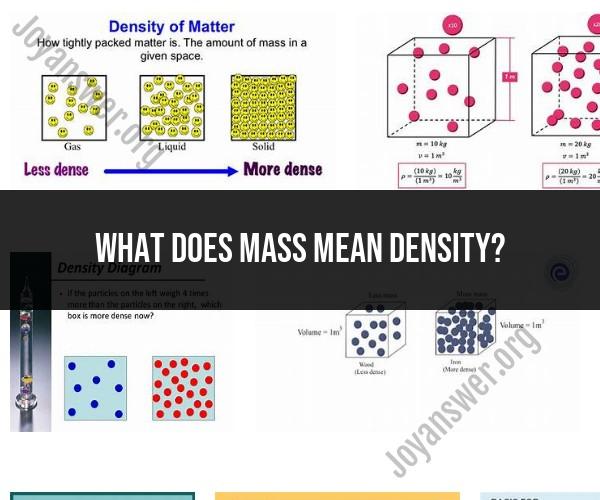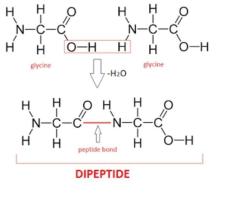What does mass mean density?
Mass is one of the fundamental properties of matter, and it plays a crucial role in determining the density of a substance. Here's how mass relates to density:
Mass: Mass is a measure of the amount of matter in an object or substance. It is typically measured in units like grams (g) or kilograms (kg). Mass is an extensive property, which means it depends on the amount of substance present. For example, a larger quantity of the same substance will have a greater mass.
Density: Density is a measure of how much mass is packed into a given volume. It is calculated by dividing the mass of an object or substance by its volume. The formula for density is:
- (rho) represents density in units such as grams per cubic centimeter (g/cm³) or kilograms per cubic meter (kg/m³).
- is the mass of the substance in grams or kilograms.
- is the volume of the substance in cubic centimeters (cm³) or cubic meters (m³).
In summary, mass and density are related because density is a property that depends on both the mass and volume of a substance. If you have more mass within a given volume, the density will be higher. Conversely, if you have less mass within the same volume, the density will be lower. This relationship helps scientists and engineers characterize and compare the properties of different materials.
Mass and Density: Deciphering the Relationship Between the Two
Mass and density are two fundamental properties of matter. Mass is a measure of the amount of matter in an object, while density is a measure of how tightly packed the matter is in an object.
The relationship between mass and density can be expressed by the following equation:
Density = mass / volume
This equation tells us that density is directly proportional to mass and inversely proportional to volume. In other words, the more mass an object has, the denser it is, and the smaller the volume of an object is, the denser it is.
The Density Equation: How Mass Plays a Key Role in Density
The density equation shows how mass plays a key role in density. The more mass an object has, the higher its density will be. For example, a lead cube has a higher density than an aluminum cube of the same size because lead has a higher mass than aluminum.
Mass and Density Connection: Exploring the Scientific Link
Mass and density are connected because they are both measures of matter. However, they are also different in some important ways. Mass is a scalar quantity, which means that it has only magnitude. Density is a vector quantity, which means that it has both magnitude and direction.
The direction of density is always perpendicular to the surface of an object. For example, the density of a water balloon is perpendicular to the surface of the balloon.
Mass and density are both important properties of matter that are used in a wide variety of scientific and engineering applications. For example, density is used to identify different types of materials, to calculate the buoyancy force acting on an object submerged in a fluid, and to design structures such as bridges and buildings.
Here are some examples of how mass and density are related in the real world:
- A lead fishing weight sinks faster than a cork fishing weight because lead has a higher density than cork.
- A hot air balloon can rise into the air because the hot air inside the balloon has a lower density than the surrounding air.
- A ship can float on the water because the ship's density is lower than the density of water.
Overall, mass and density are two important properties of matter that are closely related. By understanding the relationship between mass and density, we can better understand the behavior of matter in the real world.












